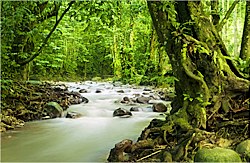|
New U.S. trade tariffs – making enemies or good business?
With the recent headlines of U.S. trade tariffs, there is no doubt the U.S. is making global economic enemies, but should anyone be surprised as trade reform was one of Donald Trump’s “Make America Great Again” campaign platforms.
Here is what you need to know at a glance:
Steel and Aluminum
On March 8, 2018, Presidential Proclamations were signed by Donald Trump to impose additional duties to U.S. imports of certain steel (25%) and aluminum (10%) articles. Those additional duties became effective March 23, 2018.
While Canada and Mexico originally received an indefinite exemption from the tariffs, a new presidential order added numerous countries (member countries of the European Union, Argentina, Brazil, South Korea and Australia) to the exemption list, along with a May 1 expiry date for all exemptions – it is unknown whether the May 1 expiry is to apply pressure coinciding with existing NAFTA talks or whether import quotas will be assigned to currently exempt countries to avoid those countries acting as conduits for re-export of Chinese origin steel.
The steel duties will be applied at the six digit level to the following tariff numbers: 7206.10 through 7216.50, 7216.99 through 7301.10 (includes ingots, bars, rods, sheets and wire), 7302.10, 7302.40 through 7302.90 and 7304.10 through 7306.90 (includes rails, pipes, and tubes).
The aluminum duties will be applied to the following tariff numbers: (a) unwrought aluminum (HTS 7601); (b) aluminum bars, rods, and profiles (HTS 7604); (c) aluminum wire (HTS 7605); (d) aluminum plate, sheet, strip, and foil (flat rolled products) (HTS 7606 and 7607); (e) aluminum tubes and pipes and tube and pipe fittings (HTS 7608 and 7609); and (f) aluminum castings and forgings (HTS 7616.99.5160 and 7616.99.5170).
Potential China tariffs
On March 22nd President Trump signed a Presidential Proclamation to impose 25% tariffs on China’s exports of aerospace, information and communication technology and machinery exports, encompassing approximately 1,300 tariff lines impacting up to $60 billion annually.
The proclamation was based on an investigation initiated in August 2017 by the United States Trade Representative (USTR) which resulted in a 215 page report entitled “China’s Acts, Policies, and Practices Related to Technology Transfer, Intellectual Property, and Innovation.”
From the report, the President cited the loss of 6 million jobs and the closing of 60,000 factories due to a $500 billion trade deficit with China and $800 billion overall deficit. The policy going forward is to have a “reciprocal” or “mirror” tax on countries that impose excessive tariffs on U.S. goods and other unfair trade practices such as forced technology transfers and plausible deniability regarding cyber theft.
The President has instructed the USTR to publish a proposed list of products and any tariff increases within 15 days of the March 22nd announcement. After a period of notice and comment, the Trade Representative will publish a final list of products and tariff increases.
- The list will be set out in a Federal Register notice seeking public comments on the proposed tariff action. Comments will be due 30 days from publication. The notice will also announce a date for a public hearing.
- USTR, with the assistance of the interagency Section 301 Committee, will review and analyze the comments.
- When the process is completed, USTR will announce the final determination.
For more information, contact Brian Rowe, Director – Customs Compliance & Regulatory Affairs.
North American rail services continue to struggle –
Clients demand answers
Operational issues, led by high demand and insufficient network resiliency, coupled with severe winter weather conditions, have created serious delays in the movement of freight by rail across Canada and the U.S.. The surge in freight traffic over the last six months has overwhelmed railroads, with service deteriorating substantially since November.
Shippers, manufacturers, agricultural producers and governments are now demanding updates on current status, as well as how rail lines plan to improve the situation, given the serious concerns about the reliability of North America’s railroad network. Updates and feedback on the following points are now being demanded from rail carriers by their customers, in order to ensure progress will be made to improve the viability of North American rail service:
- Planned infrastructure improvements: Relating to both equipment, lines and terminals.
- Employee resources: Current head count/hiring plans.
- Initiatives to proactively communicate with shippers regarding service issues.
- Local Service Performance: Identify locations where performance is trending below historical norms.
- Capacity constraints: Identify points on rail lines where congestion is an issue and what steps are being taken to deal with it.
For more information, contact David Lychek, Manager – Ocean & Air Services.
Megaship catches fire at sea
A fire on the15,262 TEU Maersk Honam has led to the death of five crewmen and the loss of many containers. Insurers expect the damages will total in the hundreds of millions of dollars. The surviving crew members abandoned ship and were rescued by other merchant ships and the Indian Coast Guard. The still smoldering ship is being towed to the Port of Jebel Ali, U.A.E., where the cargo will eventually be offloaded.
Risk management experts say fires on mega containerships are difficult to fight because there is often no access to the container that started the blaze. They also say megaships are inherently more prone to fires and other safety hazards because the high number of containers increases the chances that one or more will have a problem related to the two issues that are becoming an increasing concern for all container ships – non-declaration of hazardous cargo and counterfeiting.
The financial consequences of the Honam disaster went up for everyone involved on March 9th, when the vessel owners declared “General Average“. This means the substantial cost of the lost cargo, plus all salvage, vessel damage, towing, clean up, port and legal settlement costs, has to be covered by every company with freight on the vessel, including those with contents not touched by the fire.
The ocean freight industry has seen several major incidents over the past few weeks, including this fire and another on board a Maersk vessel, plus a containership collision in Karachi Port where containers were ejected into the water. These incidents underscore the importance of always buying cargo insurance.
Protect yourself against this substantial risk by buying Cargo Insurance, a small price to pay for the peace of mind that comes with knowing you will not suffer a mega financial loss when a mega-ship gets in trouble at sea.
For more information, contact Debbie McGuire, Manager – Freight Solutions.
New life for Trans-Pacific Partnership (TPP)
Eleven countries, including Canada, have agreed to reduce tariffs, resulting in one of the largest free trade agreements in the world. This new agreement, based on the former Trans-Pacific Partnership (TPP), is now the Comprehensive and Progressive Agreement for Trans-Pacific Partnership (CPTPP).
The tariff reductions by Canada and its trade partners are a key element of the CPTPP, bringing together a market of nearly 500 million people with a total value of $10 trillion.
Member countries are Australia, Brunei, Canada, Chile, Japan, Malaysia, Mexico, New Zealand, Peru, Singapore and Vietnam.
CPTPP next steps:
- Each of the CPTPP parties are now undertaking their own respective domestic procedures for ratification and implementation.
- For Canada, this includes tabling the agreement and introducing implementing legislation to Parliament.
- Upon completing domestic procedures, the Government of Canada will need to obtain legal authority to ratify the CPTPP from the Governor-in-Council.
- The CPTPP will enter into force 60 days after at least six (or 50%) of the signatories have notified the Depositary (NZ) of the completion of ratification procedures. For subsequent parties that ratify the agreement, the CPTPP will enter into force for that party 60 days after the date of its ratification.
More information on the CPTPP agreement, including the full text of the agreement and Frequently Asked Questions are available from the Government of Canada.
For more information, contact Brian Rowe, Director – Customs Compliance & Regulatory Affairs.
New information required for shipments of imported cheese
Effective April 3, 2018, Canadian importers will be required to identify if imported cheese (excluding processed cheese of HS 0406.30) is manufactured from pasteurized or unpasteurized milk. Shipments could be delayed if this information is not on shipping documents.
The affected HS Tariff Classifications are:
0406.10 – Fresh (unripened or uncured) cheese, including whey cheese, and curd
0406.20 – Grated or powdered cheese, of all kinds
0406.40 – Blue-veined cheese and other cheese containing veins produced by Penicillium
roqueforti
0406.90 – Other cheese
For more information, contact Brian Rowe, Director – Customs Compliance & Regulatory Affairs.
Sign up for Email Alerts!
Keep up with the latest developments in the logistics business by signing up for our Email Alerts!, issued whenever there is news of interest to our valued clients.
|
 |
|
|
|
 |
|
The national park contains one of the oldest rainforests on Earth, home to more than 10,000 species of plants, 1,000 types of butterflies, 140 types of animals, 350 bird species, 100 kinds of snakes and 150,000 kinds of insects. |
How many clues do you need to name a country that has 878 islands?
- Twin skyscrapers in the capital city were considered the tallest buildings in the world between 1998 and 2004.
- Exports of goods and services constitute more than 80 percent of GDP.
- Five races (Malay, Chinese, Indian, Iban, Kadazan) make up most of the population.
- The total length of highways in this country (65,877 km) exceed the Earth’s circumference (40,075 km).
- This country has the largest cave chamber in the world by area, said to be able to easily accommodate a Boeing 747.
- This country has the largest individual flower in the world which is foul smelling and can bloom up to 3 feet and weigh 11 kilograms.
- The biggest roundabout in the world is located in this country – it is 3.5 km in diameter.
 Click here to see the answer Click here to see the answer
For more information about shipping freight to or from this country, contact Debbie McGuire, Manager – Freight Solutions.
Know what type of insurance is available – and what’s best for your business
An open policy is typically for companies that have a regular frequency of goods in transit. The contract will cover all shipments that are within the scope of the insurance. Premiums are debited monthly or quarterly.
An individual Certificate or Policy is an insurance contract for a particular shipment, and is put in place on a per shipment basis.
|
 |
|
Janice Ilkay, Manager – Information Technology Services |
At Your Service: Janice Ilkay, Manager – Information Technology Services
Universal’s significant IT resources are under the care and supervision of Janice Ilkay, Manager – Information Systems.
Janice joined Universal in 1990 as Accounting Supervisor, and assumed her current responsibilities for all IT projects and initiatives in 1997.
Janice can be reached by phone (905) 882-4880, ext. 261 or by email. |

